Carbines have been around since the fighting man realized that he needed a more suitable weapon for close work where a full-length weapon was not feasible to use. Many carbines were simply cut-down version of full-length combat rifles where other carbines were unique among themselves.
By definition, the carbine is derived from the French “carabine” and is a long arm firearm but with a shorter barrel than a rifle or musket. Many carbines are shortened versions of full length rifles, shooting the same ammunition, while others fire lower-powered ammunition, including those designed for pistols.
The smaller size and lighter weight of carbines makes them easier to handle. They are typically issued to high-mobility troops such as special-operations soldiers and paratroopers, as well as to mounted, supply, or other non-infantry personnel whose roles do not require full-sized rifles.
There are many carbines of both rifle and pistol caliber; the M1 Carbine, the M4 Carbine, the Marlin camp carbines, Steyr Aug, Marlin lever-action carbines, AR15 variants, the venerable AK47 and AK74, the Ruger 10/22, and on and on.
For civilians, carbines have been selected for home defense, competition, plinking, and just for the plain enjoyment of shooting.
Extremely popular is pistol and carbine combination with both having the capability to shoot the same ammunition. This was a common the old west as it is today. In fact, and in some cases, it was necessary for survival. A PCC (Pistol Caliber Carbine) can be a welcome addition to the home and personal defense pistol.
The first carbines that I owned was a pair of Marlin Camp Carbines; one in 9mm and one in .45 acp. They were heavy firearms, made of steel and wood furniture, and were actually heavier than the M1 Carbine. The .45 acp version of the Marlin Camp Carbine was my favorite as it would use standard 1911 magazines – my pistol of choice at the time. Today, the Marlin Camp Carbines are considered “guns of yesteryear” and are sometimes found at gun shows and are still available through on-line vendors.
I had stumbled across a Beretta CX4 Storm a number of years back in a local gun shop. The look of it immediately turned me off, as my “old school” thinking said that there was no way I would own one. I also said that about Glock pistols until I forced myself to buy one. Then I found out that they were like potato chips, you could not have just one. Maybe polymer did have a place in the gun world after all. Fast forward and I now have several Glock pistols and several other polymer pistols, and now, a Beretta CX4 Storm Carbine.
The CX4 Storm was a used firearm and no one at the LGS knew anything of its history or why they had it. I inspected it the best that I could in the store short, of disassembling it, and decided to take a chance on it. Several items were missing from the hard case that would normally come with a new CX4 Storm (manual, cleaning rod and bore mop, stock spacer, and front sight tool) but all are easily available locally or on-line. Note that I had previously down-loaded the manual to evaluate whether I really wanted to be interested in the CX4 Storm.) I had also done my research on the CX4 Storm by viewing many U-Tube videos including those created by Hickock45. I can’t say that I was hooked completely, but I was highly interested. Besides, I needed a good 9mm carbine to hook up with my Beretta 92FS and 92FS Inox.
The first thing that I noticed when picking up the CX4 Storm was how light and balanced it was. This is what a carbine is supposed to be about – light and lively. Putting it to the shoulder I found that the 13.5 inch length of pull (LOP) actually felt alright. This was strange, since I normally like a 14 inch to 14.25 inch LOP. But, I thought, this is a different kind of firearm. My hand took right to the pistol grip. The pistol grip has no texturing at all and I may add a panel of rubberized grip tape to either side of the grip at some point.
All controls were set up for right-hand shooters and that was quickly changed during the first cleaning. I am an ambidextrous shooter. Due to an injury, I shoot long guns left handed and handguns right handed (and left). The CX4 Storm, being a 9mm, could be fired from my right side with no discomfort, but I have just become used to firing long guns left handed.
Switching bolt handle, and ejection sides is very easy. Converting the safety and magazine release takes a little more effort. Since most of those reading this are probably right handed, I won’t expound on how to convert safety and magazine releases. Suffice it to say that I am learning to use the magazine release with the trigger finger and the safety button with the right hand. The bolt handle is also operated with the right hand while the bolt release is operated with the trigger finger of the left hand when necessary. Confused yet?
The overall look of the CX4 Storm is a conglomeration of well-though out angles and thicknesses. The firearm is thinner looking from the front than what I expected. The “sculpturing” of the stock is nicely done and all line flows together in a pleasing way. Somehow, even the top-mounted Picatinny rail seems to blend in with the rest of the firearm. The previous owner had mounted one of the side mounts on the firearm (perhaps for a light) but I found it interrupted the looks of the firearm; albeit functional. I removed the offending object, but may add the Beretta Bottom and Side Accessory Rail at some point.
Everything functions solidly on this firearm. The bolt, the safety, the magazine release button, the bolt release lever all feel somewhat out of place on a firearm that is essential 95% polymer because they have a positive feel to them. Aside from the bolt components, the barrel, and some springs and things, this firearm is polymer – but a well constructed firearm. Although the bolt and barrel comprise the majority of the weight of the firearm, the CX4 Storm is well balanced. Adding a full magazine in the near center of the firearm doesn’t seem to affect the balance, which is fairly centered in the first place.
The front and rear sights are well protected. The rear sight is a dual-aperture unit that can also flip down out of the way when using an optic. The front sight is adjustable for both windage and elevation using a front sight tool. Unfortunately, the front sight tool did not come with the firearm – and the front sight is out of adjustment. For the time being, I have installed an optic (UTG DS3068 6.4-Inch ITA Red/Green Dot Sight with Integral QD Mount and Flip-open Lens Caps) and will use it until I am able to acquire the front sight tool and adjust the mechanical sights. The UTG sight; however, will remain as the primary sight. Note that I use a Scopeshield cover rather than the flip-up covers provided with the sight. The reason is that the Scopeshield is actually faster to remove than flipping up two covers; a quick tug on the rear tab of the Scopeshield to remove it and the sight is ready to use.
The trigger of the CX4 Storm is definitely different from many other trigger I have pulled in the past. The best way to briefly describe it is that is somewhere between a Glock trigger, a Ruger SR trigger, and a Springfield XDs trigger, but definitely not a Kahr trigger. Okay, that was easy.
Actually, the trigger trips at about 7.5 pounds of pull. Before you get to that point; however, your trigger finger will go through quite a bit of slack and a touch of grittiness. The trigger exhibits a clean break and then a healthy over-travel. Trigger reset is not all that bad, but my trigger finger has not been all that fast to exercise a quick reset anyway. The CX4 Storm does not have a target trigger, to say the least. The trigger on this unit is still somewhat new and I don’t believe it is broken in as yet. Some better lubrication and use might make things better. Liability-wise, it is a good trigger and I will leave it at that.
Every rifle, shotgun, and carbine should have a sling, in my personal opinion (and that of others). The Beretta CX4 Storm provides 4 sling mounting points; forearm, bottom of the stock in the rear, and two additional sling points on each side of the stock. I just happened to have a sling that I was not using, the Condor Speedy 2 Point Sling, and it was quickly mounted using one of the side sling mounts (thread through) on the stock and the forearm mounting point where a Blackhawk 1” swivel is used. The Condor Speedy 2 Point sling has front and rear QD buckles that allow me to quickly detach the sling, but yet keep the ends of the sling attached to the firearm. This is a handy feature because the CX4 Storm separates into upper and lower halves and I don’t have to hassle with removing a sling every time I want to clean the firearm. The Blackhawk 1” swivel is a QD type, but it is faster simply to unbuckle the sling when the sling is not needed. While I did not care for the Condor Speedy 2 Point sling on my MSR or hunting rifles, it works well on the CX4 Storm; I can quickly adjust the sling for carrying or deploying the firearm.
Almost last on the review list (as if I actually had one) is a mention about the cheek rest. The top of the rear butt stock, otherwise known as the comb) consist of a replaceable cheek rest. The cheek rest seems to be of a rubberized material that feels a whole lot better than the cold synthetic material that comprises the stock. It helps to keep the cheek in place during the massive recoil of the firearm. Alright, there is virtually no recoil of the firearm, but the cheek rest is a comfortable addition. Perhaps there were plans to make cheek rests of different height? I don’t know.
Lastly, the trigger area is nicely sculptured and the trigger access is large enough to accommodate a gloved hand. There are two protrusions; one on each side and just above the trigger guard. There is no mention of these in any literature I have found or videos that I have watched. They do; however, provide a nice trigger finger resting point when it is not on the trigger. I have to assume, that this was the intended use? Also, the magazine well has cutouts on both sides to facilitate easy removal and installation of magazine (not that magazine needs to be pulled out of the magazine well, as magazines drop free at the push of a button). Since the standard 15-round magazine fits pretty flush, the cutout helps when pushing a magazine home with the palm of the hand or the thumb.
INSPECTION AND CLEANING:
Since this CX4 Storm was used, it underwent a through cleaning and inspection. The barrel was pristine but the bolt face showed signs of firing and was easily cleaned during the cleaning process. The bolt assembly is quite impressive and, with the exception of the firing pin, is quickly separated into its component parts.
All bolt contact points were given a thin coating of LUBRIPLATE NO. 130A, my favorite product for preventing metal-to-metal, metal-to-polymer, and polymer-to-polymer wear. LUBRIPLATE NO. 130A has worked well for me in a wide range of firearms from the M1A to Glock pistols. Ballistol takes care of the rest.
RANGE TIME:
I was really looking forward to taking the CX4 Storm to the range and begin the break-in process and zero the UTG DS3068 6.4-Inch ITA Red/Green Dot Sight.
Ammunition was 124-grain FMJ provided by Georgia Arm and would serve as the primary break-in round at 25-yards (the maximum distance at this particular indoor shooting range). Since the CX4 Storm is intended for home and self defense at CQB ranges, 25-yards would suffice at this point, although I do know that the carbine (and suitable ammunition) would be very effective at longer distances.
Letting the bolt slide home, chambering that first round from the magazine, was extremely pleasing. After the last round is fired, the bolt remains open. The bolt slides home with authority. Being a “lefty”, the bolt release is a bit of a challenge. For right-handed shooters, the bolt release is readily available to the thumb of the shooting hand. Being a “lefty” means that I have to adapt and conquer and I did so. I found that I could rest the thumb of the shooting hand (left) on top of the bolt release. The thumb, after all, does not need to be wrapped inside of the pistol grip; the fingers of the shooting hand provide enough pull to stabilize the firearm. This is similar to “riding the safety” on a firearms equipped with such. During a magazine change, the thumb remains in constant light contact with the bolt release lever. As soon as the magazine is seated, the bolt can be releases very quickly with the thumb while keeping the trigger finger moves alongside the trigger housing after pressing the magazine release. Note, that I rarely wrap my whole hand around a rifle stock so this method is something that my hand is used to doing anyway. Different church, same pew. I look at the pistol grip as a carry handle, in this case, as I do with a pistol gripped MSR or shotgun. (NOTE: An update to this follow later in the write-up. Doing what I was doing, resting the thumb on the bolt release lever, was not a good thing – keep on reading!)
It took me five rounds to zero the sight for “practical accuracy” and the turrets were locked for a 25-yard zero.
100 rounds later, I was starting to gain an appreciation for the CX4 Storm. It ran without fault and I can’t ask for more than that. About 50 rounds were fired from the bench for grouping and the CX4 Storm and I were able to produce a final 2.5” inch group. The remaining rounds were fired from a standing position and to various points on a 100-yard sight-in target. As long as I did my part, the CX4 Storm is more than capable of sending rounds downrange where the sight is pointed.
The trigger; albeit, heavy by some standards, proved to me more than adequate in operation when I moved from a bench to a free-standing position. As the trigger is now being broken-in, it is feeling more like a double-stage trigger; a little slack before resistance is felt. I actually like that because it provides a chance for me to change my mind about firing and move to a “high ready and covered” position.
Using the trigger finger to press the magazine release button caused some consternation, but that will go away with practice – or convert the magazine release button to thumb operation.
Recoil is very, very mild. The CX4 Storm weighs in at 5.675 pounds dry plus an extra 6.7 ounces for the sight. Of course, a full magazine of fifteen rounds will add more weight, but I discount that because the weight diminishes as rounds are being fired. The CX4 Storm is well balanced, even with the sight mounted and full magazine installed. Because of that, and the compactness of the firearm itself, I found myself over-transitioning from one point to another on the target and had to slow down the rate of fire a bit to ensure that I moved “His Shortness” from point to point smoothly. I’ll just say that running the CX4 Storm is quite a bit different from running my MSR and I have to say that I like the difference.
Extraction and ejection of spent shells was positive. The insert on the right side of the bolt worked well to deflect foreign matter, although I don’t understand why it is slotted. However, and with that said, if you pull back on the cocking handle slightly, you can immediate see if a round is chambered through the rear slot. This is the only means (that I can tell) to determine if a round is in the hole.
All in all, it was a most excellent day at the range.
RANGE DAY 2:
Another variety of 100 rounds went down range on this day.
I had selected for testing and break-in of the CX4 Storm; 124-grain FMJ from Georgia Arms, Remington 124-grain Golden Sabre, and Gold Dot 115-grain loaded by Georgia Arms.
The resultant group (if you called call it one) of sixty rounds (four magazines of 15-rounds) was pretty satisfying, as the majority of the rounds took out the center of the diamond, which resulted in an approximate 2-inch group @ 25-yards with a green dot 4 MOA sight.
Shooting for groups with a trigger pull of about 7.5-pounds is a challenge. Then again, the CX4 Storm is not intended to be a precision instrument. While I understand that there are kits in the marketplace to make the trigger smoother and lighter, for defensive purposes it is best to use the trigger that came with the firearm. Since the CX4 Storm is still new and not yet “bedded” in, no changes to the trigger group is anticipated. Trigger rest is actually better than I expected, very short and subsequent shots are quick without having to let the trigger go all the way forward.
The CX4 Storm definitely likes 124-grain fodder. The lower group was 115-grain Gold Dot ammunition. The remaining 40 rounds were scattered around the target at different aiming points an attempt to check for offhand accuracy – no groups were expected, simply point-n-shoot. Practical accuracy is easy to obtain with CX4 Storm.
I found that with the selected optic, the UTG DS3068 6.4-Inch ITA Red/Green Dot Sight with Integral QD Mount, co-witnessing the mechanical sights (both sights deployed) was near perfect with the green dot just resting at the tip of the front sight). The rear ghost-ring sight provides a near-perfect sight picture with the green dot sight activated.
There were three failures to perform during the range session (not counting mine):
- One Smokestack Jam
- One attempted Double-Feed
- One failure to lock back on the last round
The smokestack jam took place with a Gold Dot 115-grain round loaded by Georgia Arms. Perhaps, this particular round did not have enough energy to properly cycle the bolt. No other failure with this ammunition was noted during the session.
The attempted double feed was with one of the Remington Gold Sabre rounds. I believe that it was caused by the heel of the cartridge still in the magazine. It seems that the bolt hit against the heel while traveling forward to chamber the preceding round. A live round was in the chamber, probably because of the force of the bolt traveling forward. The offending round was nose-down into the feed ramp. I pushed the offending round back into the magazine (after locking the bolt back), released the bolt, and continued on. No other failure of this type was noted during the session.
One possibility for the last failure, I believe (failure to lock back on the last round), was caused by my not seating the magazine properly and fully into the magazine well. The magazine well of the CX4 Storm is indented on both sides of the well. If you use the palm of the hand to seat the magazine (or thumb) and hear the audible click when the magazine is fully seated, all is well. However, another possibility exists for the failure. My thumb may have been riding the bolt release.
You see, if I was a right-handed shooter, my thumb would be well below the bolt release lever. Being a left, and used to positioning my thumb on the same side as the rest of my fingers, my thumb is either just below or just above the bolt lock lever. I could have pressed downward on the bolt release lever during firearm, which would have prevented the bolt from locking back after the last round. I have to train myself to use a full grip on the pistol grip with the CX4 Storm. With that said, it would be nice to have an ambidextrous bolt release on the CX4 Storm for left handed users.
I made the necessary correction when inserting the magazine and adjusted my shooting grip. No other failures reared their ugly head.
I am going to have the magazine release converted for left-handed use (positioned on the right side of the grip).
I am also going to have to train myself to use the thick part of the trigger finger to press the bolt release lever down to unlock the bolt.
It was a good range day for me and the Beretta CX4 Storm.
THE REMAINING ISSUE SOLVED:
The remaining issue with running the CX4 Storm as a lefty was the direction of magazine release.
Beretta recommends that a gunsmith take on the responsibility of converting the magazine release button from one side to the other. I am not a gunsmith, I have never claimed to be a gunsmith, nor have I acted as one or played on on T.V. I do; however, have a mechanical aptitude.
First of all, I watched a good video on completely dissembling the CX4 Storm (see: REFERENCES), observed how the magazine button was installed in the firearm, determined what tools I might need to do the conversion (small pair of needle nose pliers), and decided that the conversion was something that I could do; albeit, hesitantly. The firearm construction is, after all, polymer and polymer is not forgiving when it comes to mistakes.
There are three components involved; the magazine release assembly, the magazine release assembly spring, and the magazine catch (the part that actually slides into the magazine to hold it in place).
It took me about ten minutes to convert the magazine release from right-hand to left-hand operation. In doing so, I saved having to leave the CX4 Storm with my favorite certified gunsmith (even though I like the guy and he could probably use the money)and the cost of having the work performed.
A function check with the CX4 disassembled and assembled revealed that I had done the job correctly; the magazines dropped free and locked in place, as intended.
I decided not to replace the magazine release with an extended version, as I might bump the release while gripping the pistol grip; the standard release is more than adequate.
SUPPORT THOUGHTS:
For most of my “important” firearms, I like to keep spare parts on hand. The Beretta CX4 Storm is quickly becoming one of my “favorite” firearms. With that said, Brownells is a prime provider for CX4 Storm parts and the following has been ordered for “His Shortness” to provide “running spares” (by my assessment) should the need arise for their use:
- Extractor
- Ejector spring
- Guide Rod & Spring Assembly
- Firing pin and firing pin retaining parts
- Magazine release spring
- Trigger group springs
- Cocking handle
- Front Sight Tool
Additional Items:
- Buffer (2)
- Bottom & Side Access Rail
- Spare Beretta 92 Magazines (provides enough support for the CX4 Storm and the Beretta 92s)
UPDATE 08/13/2015:
The two side rails now sport MAGPUL XTM Enhanced Rail Panels. The rail panels protect the side rails when not in use and provide a comfortable and solid gripping point for my support hand.
The XTM Enhanced Rail Panels are low-profile, two-piece covers that attach anywhere on a 1913 Picatinny rail without having to remove previously mounted accessories. Replacing the original XTM Panels, The Enhanced XTM Panels feature an aggressive anti-slip texture and dual-side routing clips for retention of light/laser cables. The design and reinforced material construction ensure the panels will remain in place under all operating conditions, but allows for easy removal using the tips of two rounds when necessary. Each set comes with four (4) two-piece panels which will cover ONE side of a carbine rail.
I found the rail covers locally (Academy Sports), but they can also be found elsewhere.
UPDATE 09/05/2021:
Recent updates have included the replacing of the optic to a Vortex Spitfire AR Red Dot and adding a barrel shroud.

Vortex Spitfire DRT Reticle
The DRT (Dual Ring Tactical) reticle eliminates the astigmatism issue that I have with red dot sights while adding about a pound to the overall weight of the firearm. The barrel shroud is simply a nice add-on, as I felt that I wanted more protection on the front end. This shroud fits my 9mm CX4 perfect. Makes the rifle look very professional and streamlined. I have published a review of the Vortex Spitfire.
Eventually, the Magpul rail covers were replaced with Hand Protector Section Panels, which are easily installed, easily customizable, and adds to a more sleeker look for “His Shortness.”
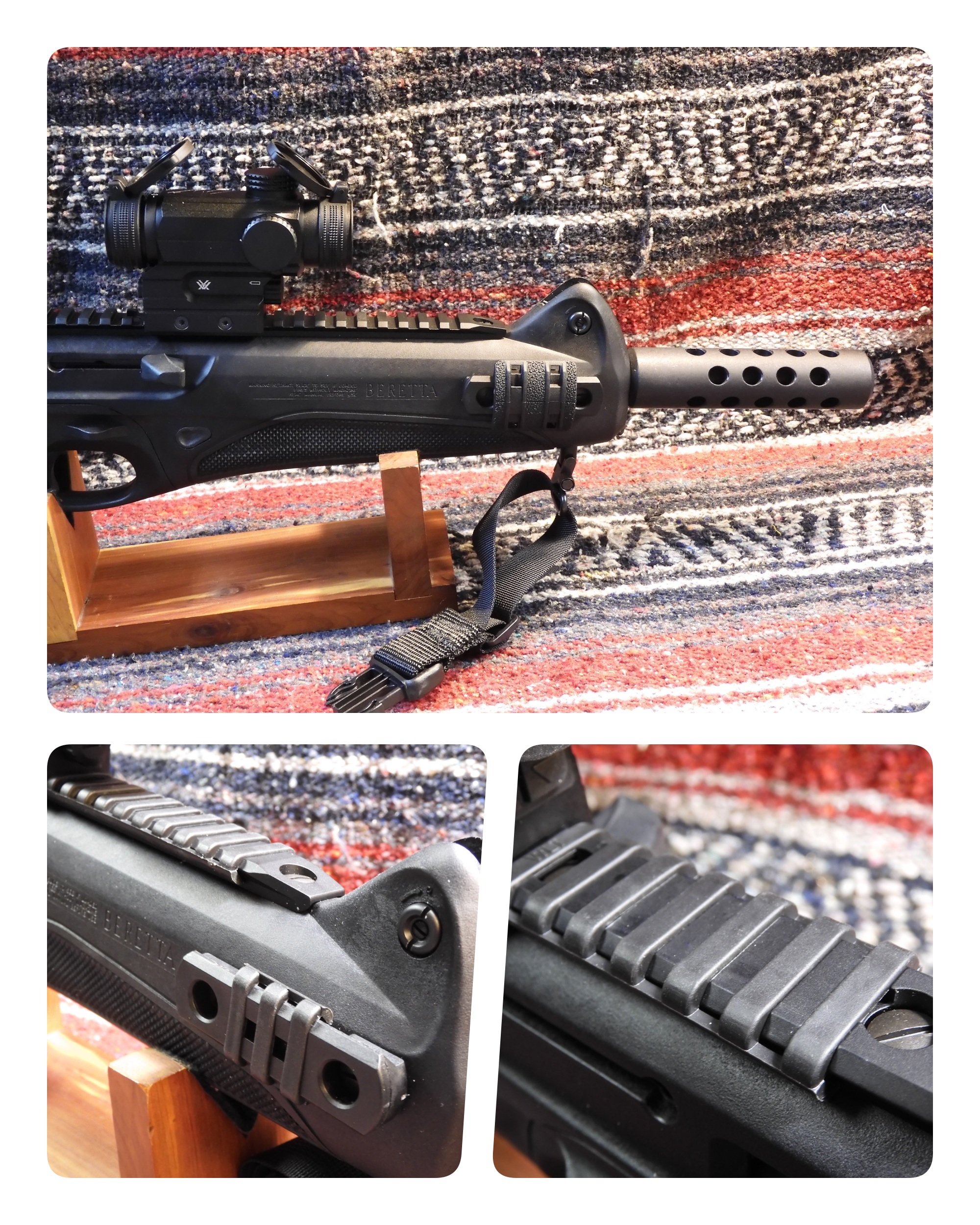
SUMMARY:
Every now and then I have regrets when purchasing a firearm. The Beretta CX4 Storm is not a regrettable purchase. My confidence in the CX4 Storm being a home-defense or personal-defense firearm is quickly growing.
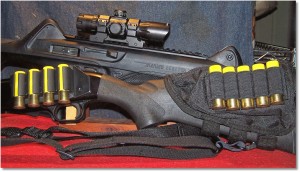
A Pair of “Grime” Removers – The Beretta CX4 Storm (“His Shortness”) and a Mossberg 500 20-gauge Shotgun (“Baa-Baa”, which means Bye Bye in baby-speak)
If everything works out well with the CX4 Storm, I would feel confident for “His Shortness” being the primary home-defense firearm; the Remington 20-gauge shotgun would be relegated to “secondary” status. Did I hear some gasps?
Some folks might be turned off by the price of the Beretta CX4 Storm; it is not cheap. I just happened to find a used one for a good price. Unfortunately, when we try to decide if a firearm is worth the price, we sometimes have to rely on what others say about it. Every firearm is an investment. For some of us, we don’t buy a firearm to shoot at the range. We purchase a firearm to protect us and our families. The Beretta CX4 Storm is one of those firearms, and I have to say that it is fun to practice with at the range. Another upside is that I get to invest in more 9mm ammunition for practice and defense.
Some folks might be turned off by the looks of the Beretta CX4 Storm; I know that I was when I first saw it. Since then I have come to realize that the Beretta CX4 Storm is a very intelligently thought out, uniquely designed, and well-executed firearm. To judge the Beretta CX4 Storm by its cover would be a mistake. This “Pontiac Fiero” of the carbine class really needs to be driven to be appreciated. Note that “Fiero” in Italian means “proud”, and given the Beretta heritage of this firearm, the analogy aptly suits it. Having once owned a 1986 Pontiac Fiero SE 2M6, I can say that maybe polymer is not all that bad – even in a firearm.
REFERENCES:
Beretta CX4 Storm: http://www.beretta.com/en-us/cx4-storm/
Carbine: https://en.wikipedia.org/wiki/Carbine
Marlin Camp Carbine: https://en.wikipedia.org/wiki/Marlin_Camp_Carbine
Condor Speedy 2 Point Sling: http://www.amazon.com/gp/product/B007IWZNDM?psc=1&redirect=true&ref_=oh_aui_detailpage_o05_s00
UTG DS3068 6.4-Inch ITA Red/Green Dot Sight with Integral QD Mount and Flip-open Lens Caps: http://www.amazon.com/gp/product/B004HIFS8A?psc=1&redirect=true&ref_=oh_aui_detailpage_o09_s01
Scopeshield: https://scopeshieldcover.com/
Blackhawk 1” Swivel & Stud: Wal-mart
Beretta CX4 Storm Sierra Papa Trigger Review & Setting Up the CX4 for Lefty Shooters: https://www.youtube.com/watch?v=58Aq-facIUA
Beretta CX4 Storm Video Review: https://www.youtube.com/watch?v=WtkuVzbgD98
CX4 Storm (Chapter 2): https://www.youtube.com/watch?v=CUudlbWhXo8
MAGPUL XTM Enhanced Rail Panels: https://www.magpul.com/products/xtm%C2%AE-enhanced-rail-panels
![]()



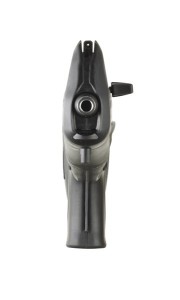
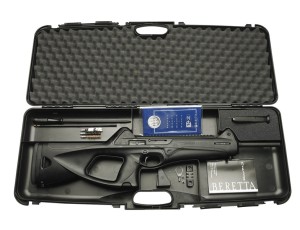
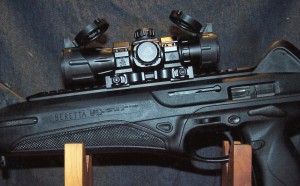
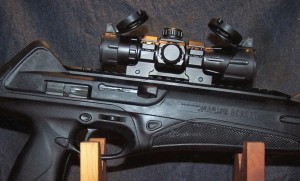
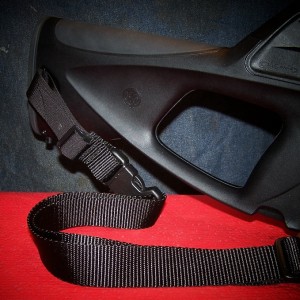
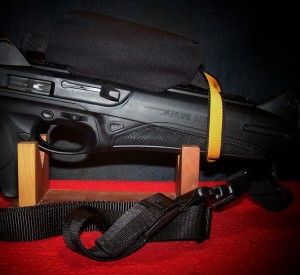
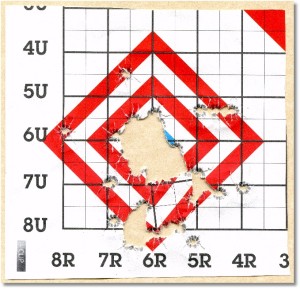
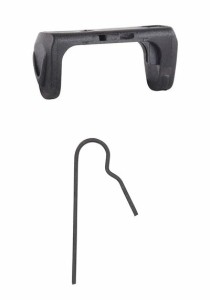
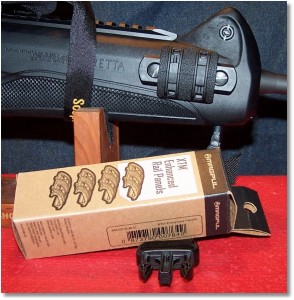
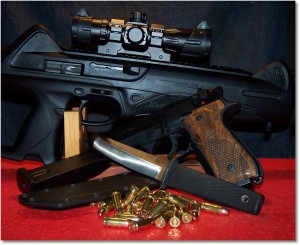
One Response to Beretta CX4 Storm – A Review of “His Shortness”